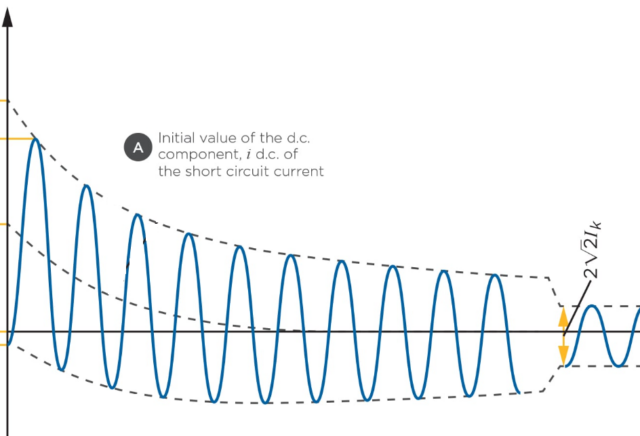Circuit breaker nameplates sometimes indicate only rating on symmetrical short circuit current. In such cases, the rating only reflects the AC component of the short circuit current. A common misinterpretation occurs when one compares the symmetrical short circuit current against the symmetrical short circuit current rating of the circuit breaker for the purposes of circuit breaker duty evaluation. This article provides pointers to avoid making the mistake.
Importance of X/R Ratio
Short circuit analysis is a critical piece of the engineering study for a power system. This analysis determines the maximum available fault current in the system, and hence the maximum level that the electrical equipment should be able to withstand.
When a short circuit occurs, the total short circuit current consists of:
● AC component (varies sinusoidally with time), also known as symmetrical current.
● DC component (non-periodic and decays exponentially with a time constant L/R; L/R is proportional to X/R)
● The DC component makes the symmetrical current become asymmetrical.

